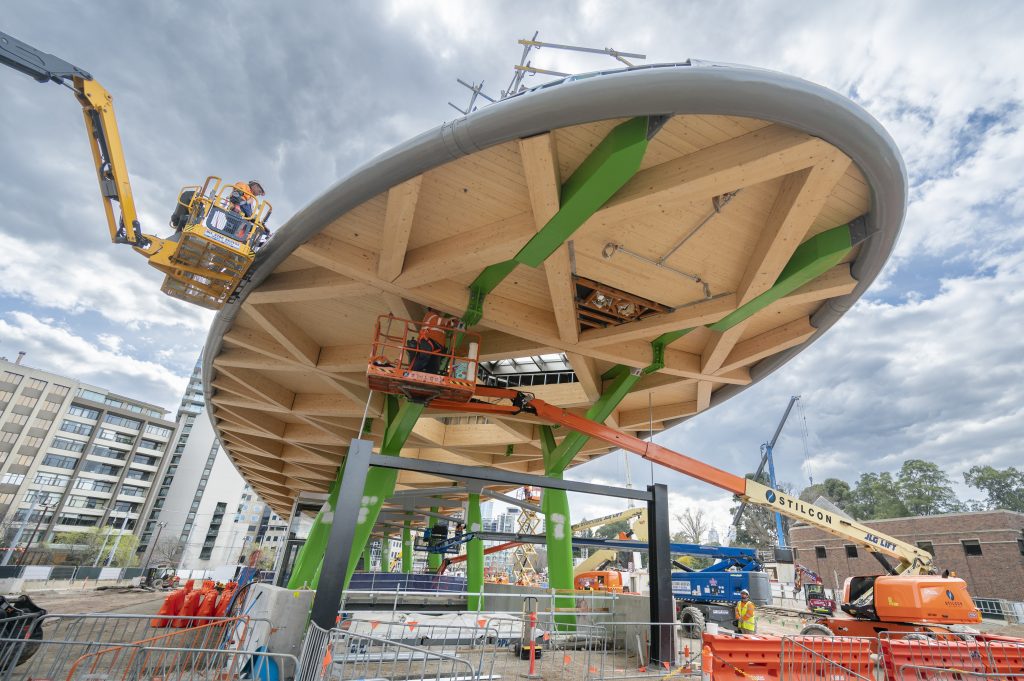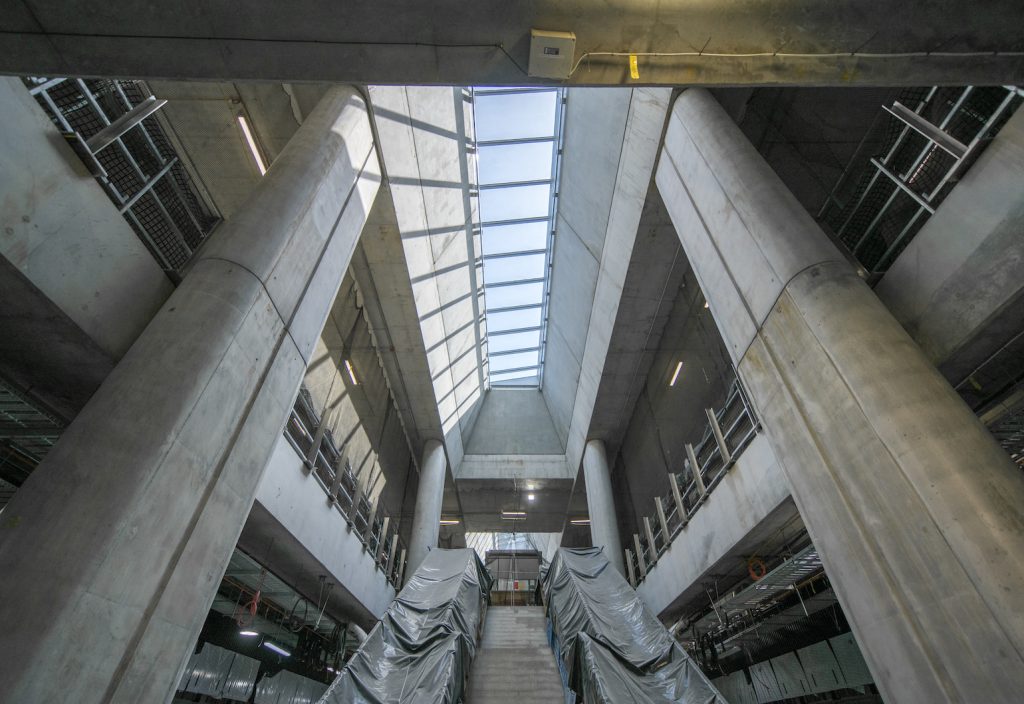It’s safe to say that the Metro Tunnel Project currently underway in Melbourne is a massive undertaking.
For Deputy Director of Delivery Jim Heron, who manages everything from construction to safety to engineering, it’s also the project of a lifetime.
“Building in the city is an absolute challenge,” he told create. “West Gate Bridge was big, but in terms of delivering a project in the CBD, this is the project.”
Excavation methods
By introducing a new underground train line running northwest to southeast beneath the Melbourne CBD, the Metro Tunnel Project aims to reduce travel times for commuters on the Cranbourne, Pakenham and Sunbury lines – with the ultimate goal of alleviating pressure on the busy City Loop and increasing the frequency of trains.
Five new underground stations will soon be unveiled: Arden, Parkville, State Library, Town Hall and Anzac.
A ‘box cut’ solution was possible at three of the stations, namely Arden, Parkville and Anzac. Located outside the CBD and therefore less likely to disrupt or be disrupted by surrounding architecture, space for these stations was created by digging directly down into the ground: in essence creating a box-shaped rectangle in the ground.
The two CBD stations, State Library and Town Hall, required a different strategy.
“There was a shallow tunnel option along Swanston Street, but that would have closed the street for at least five years,” Heron explained. “We would have had to dig up Swanston Street, disrupting traffic and tram flow.
“There would be other issues such as undermining existing structures and moving utilities off the street. Utilities are seen as a risk to a project because of the cost of and time for removal.”
Owing to the difficulties associated with an open cut and to keep Swanston Street relatively intact across the project’s lifetime, the decision was made to change tactics on the two CBD stations.
This led to its own technical challenges.
“Logistically feeding the two CBD stations is challenging because everything goes in and comes out through the same shafts,” Heron said. “At the box stations we could layer in columns and slabs from above, but in the CBD we had to do a lot more work overhead to support the ground above.”
[embedyt] https://www.youtube.com/watch?v=RNKkGZ6XFAU[/embedyt]
Unexpected finds
Of course, the Metro Tunnel involves tunnelling under more than just a city – there was also the prospect of tunnelling under the Yarra River.
“Melbourne’s ground conditions are varied,” Heron noted. “There’s basalt, clay, rock and silt. If you’re cutting into a consistent material like rock, your cutter heads would be designed to cut that material.”
The variety of materials in the path of the project required the use of a mixed shield tunnel boring machine, one designed to cope with the range of ground conditions.
“Tunnelling under a river is not something you do every day,” he said. “Was it a challenge? Yes. But by all accounts, we’ve had a successful outcome.”
The most demanding aspect of proceedings, in Heron’s eyes, was not engineering-related at all – but rather the impact of COVID-19 on staff availability.
“On a major project like this, if one person in a working group became sick, the whole team became sick,” he said. “Then, obviously, there was the catch-up period when people got back to work. So we’ve worked hard onsite to minimise the impacts of COVID.”
Construction on the tunnels began in 2018 and is scheduled to finish a year early in 2025. During the process, construction and survey teams have made several unanticipated discoveries.
“Archeological digs beneath State Library and Town Hall have found items we didn’t expect,” Heron said. “There were coins, toys and 150-year-old coffee beans. A utilities dig beneath the State Library even uncovered some cow bones. It was all related to the commercial use of the area in the past. For instance, there were teeth found down at Flinders Street; there used to be a dentist there in the early 1900s.
“Some of our structures go down 20 to 30 metres, so you’re in areas of virgin ground. That means you’re probably going to find stuff underneath.”
The project team’s focus will soon shift as work nears completion.
“We’re not far away from putting the first test trains in the tunnels,” Heron said. “To be in a position where we can start testing will be a massive milestone for this project.”
Swipe the images below to see how the developments have unfolded at train stations across Melbourne.

Learn more about the Metro Tunnel Project here.
Enjoying reading create digital? Take our readership survey and share your views.
